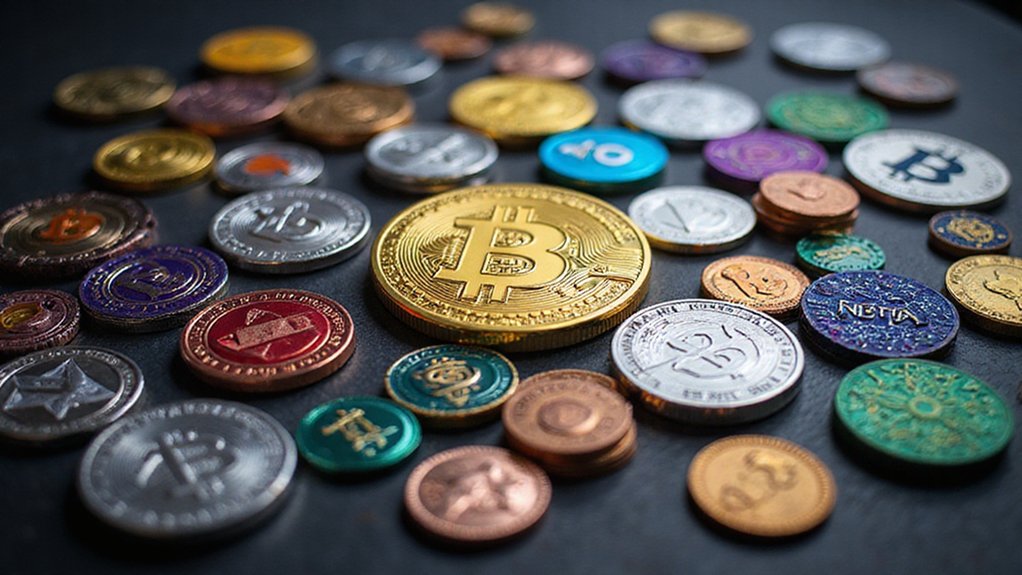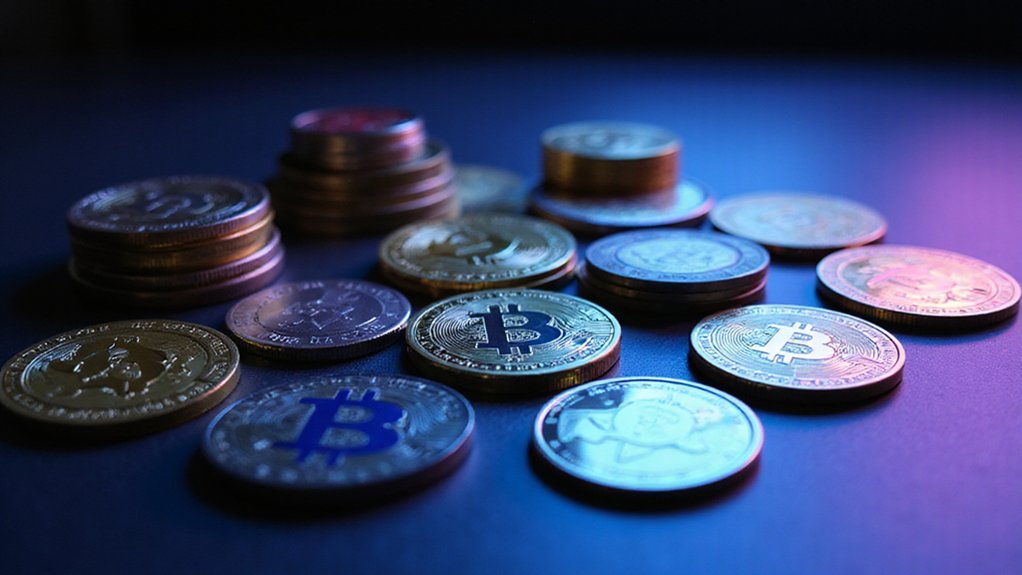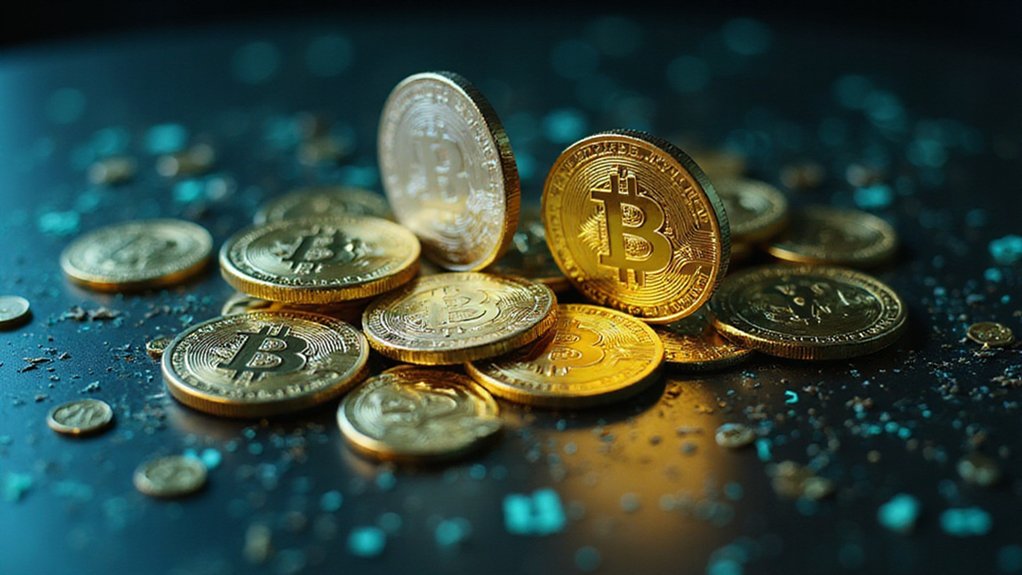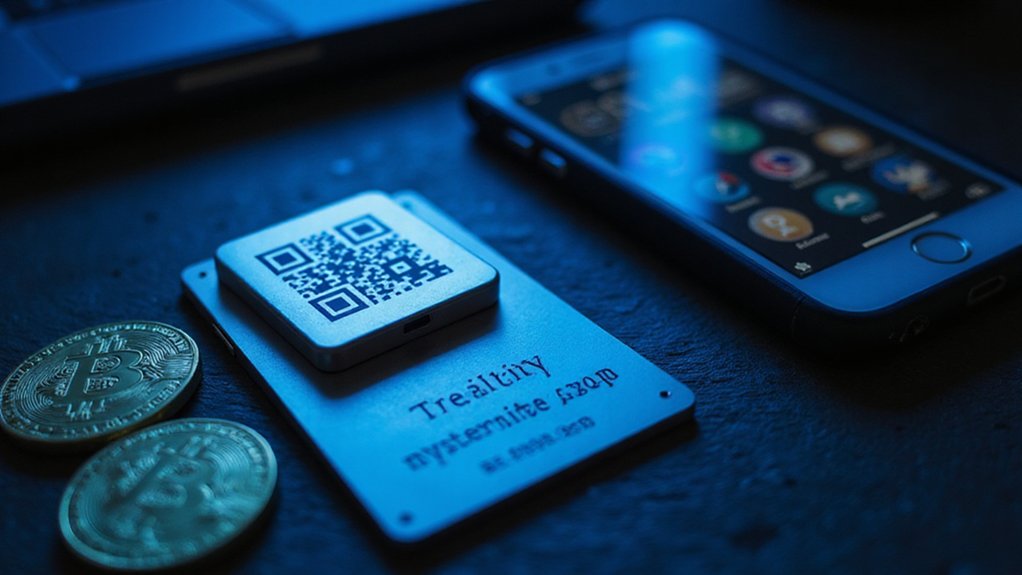Altcoins—literally “alternative coins”—encompass any cryptocurrency launched after Bitcoin’s 2009 debut. These digital assets, numbering in the thousands (from Ethereum’s smart-contract platform to Dogecoin’s meme-driven economics), typically address Bitcoin’s perceived limitations or explore novel blockchain functionalities. Some serve as payment mechanisms, others as privacy solutions, utility tokens, or stability vehicles pegged to fiat currencies. Though most remain speculative ventures with questionable longevity, their collective market presence illustrates cryptocurrency’s evolution beyond Satoshi’s original vision.

When Bitcoin emerged from the digital shadows in 2009, few could have anticipated the cryptocurrency revolution it would trigger—or the thousands of alternative digital currencies that would follow in its wake.
These digital assets, collectively termed “altcoins” (alternative coins), comprise every cryptocurrency launched subsequent to Bitcoin’s genesis block.
The taxonomy occasionally excludes Ethereum as well, given its mammoth market presence and revolutionary smart contract capabilities that transformed blockchain utility beyond mere value transfer.
The altcoin ecosystem has expanded at a dizzying pace, with estimates suggesting between 9,000 and 20,000 distinct cryptocurrencies now populate the digital landscape.
The altcoin universe expands relentlessly, with thousands of digital currencies emerging from Bitcoin’s shadow into an increasingly crowded blockchain firmament.
This proliferation reflects both genuine innovation and speculative excess—a testimony to blockchain’s disruptive potential and, perhaps, the market’s occasional indiscrimination.
By 2018, CoinMarketCap had already cataloged over 1,500 cryptocurrencies, with Bitcoin standing alone while all others sheltered under the altcoin umbrella.
Altcoins manifest in various forms, each addressing perceived limitations in Bitcoin’s architecture or exploring entirely new functionalities.
Payment tokens facilitate transactions, stablecoins offer refuge from volatility (an ironic development in a space that once championed price fluctuation as feature rather than bug), privacy coins obscure transaction details, and utility tokens power specific blockchain ecosystems.
The menagerie extends further to include meme coins (whose value derives primarily from community sentiment) and governance tokens (which distribute decision-making authority across stakeholder networks).
Many leading altcoins have achieved remarkable prominence, with Ethereum, Tether, Binance Coin, Solana, and USD Coin dominating market capitalization rankings beneath Bitcoin.
Each represents distinct value propositions—from Ethereum’s programmable infrastructure to Tether’s dollar-pegged stability.
Their development frequently involves forking existing codebases while introducing novel consensus mechanisms or functionality improvements.
These cryptocurrencies typically experience significant price surges during Alt Season when investors shift focus away from Bitcoin’s stability toward higher-return potential alternatives.
While Bitcoin was designed as an alternative to standard currency, many altcoins extend blockchain technology for more diverse applications.
The altcoin revolution continues unabated, with each new token offering either genuine innovation or merely variations on established themes.
Whether representing technological breakthroughs or speculative vehicles, these digital assets collectively demonstrate cryptocurrency’s evolution from Bitcoin’s singular vision into a diverse financial ecosystem that challenges traditional notions of money, value, and trust.
Many of these alternatives provide strategic investment opportunities for diversification at lower entry costs compared to Bitcoin’s occasionally prohibitive price point.
Frequently Asked Questions
How Do I Store Altcoins Safely?
Securing altcoins requires a multi-layered approach that the crypto-savvy invariably adopt.
Hardware wallets (cold storage) offer superior security for long-term holdings, while hot wallets serve daily transaction needs.
One must religiously safeguard seed phrases—preferably offline, perhaps engraved on metal—and verify addresses before transactions.
Regular security audits and software updates are non-negotiable practices in a landscape where recovery options are particularly absent compared to traditional banking’s safety nets.
What Are the Tax Implications of Trading Altcoins?
Trading altcoins triggers various tax obligations that crypto enthusiasts often underestimate.
Every swap between cryptocurrencies constitutes a taxable event requiring capital gains calculation—yes, even when no fiat currency materializes.
Holding periods determine whether gains face ordinary income rates (up to 37% for short-term) or preferential long-term rates (0-20%).
Meticulous record-keeping proves essential, as the IRS expects detailed reporting on Schedule D and Form 8949, regardless of one’s philosophical objections to the taxation of digital assets.
Can Altcoins Replace Traditional Banking Systems?
While altcoins possess disruptive potential in financial services, complete replacement of traditional banking systems remains unlikely.
These cryptocurrencies could conceivably address inefficiencies in cross-border payments and financial inclusion, yet significant barriers persist—regulatory uncertainty, scalability limitations, and institutional trust deficits chief among them.
More realistically, a hybrid ecosystem may emerge where altcoins complement traditional banking, with established institutions adopting blockchain technologies while maintaining essential intermediary functions in lending and risk management.
Which Exchanges Are Best for Buying Less Popular Altcoins?
For acquiring obscure altcoins, Bitmart and Gate.io stand as the preeminent options, offering 1,700 and 2,100 cryptocurrencies respectively—a veritable smorgasbord compared to competitors.
While Binance provides access to 500 cryptocurrencies (hardly insignificant), traders seeking the numismatic equivalent of rare stamps would find the aforementioned exchanges more accommodating.
The quest for undiscovered gems—potentially lucrative yet fraught with risk¹—necessitates platforms with extensive listings beyond the cryptocurrency mainstream.
¹Markets with lower liquidity often exhibit heightened volatility and susceptibility to manipulation.
How Do Altcoin Airdrops Work?
Altcoin airdrops function as strategic token distributions where projects deposit free cryptocurrencies directly to eligible wallet addresses.
The process typically involves a project taking a blockchain “snapshot,” followed by token distribution according to pre-established criteria—whether holding specific coins, completing promotional tasks, or simply having compatible wallets.
This quintessential crypto marketing tactic (sometimes bordering on digital panhandling) serves to bootstrap network effects, reward loyal users, and generate buzz without the messy business of actually purchasing user acquisition.









